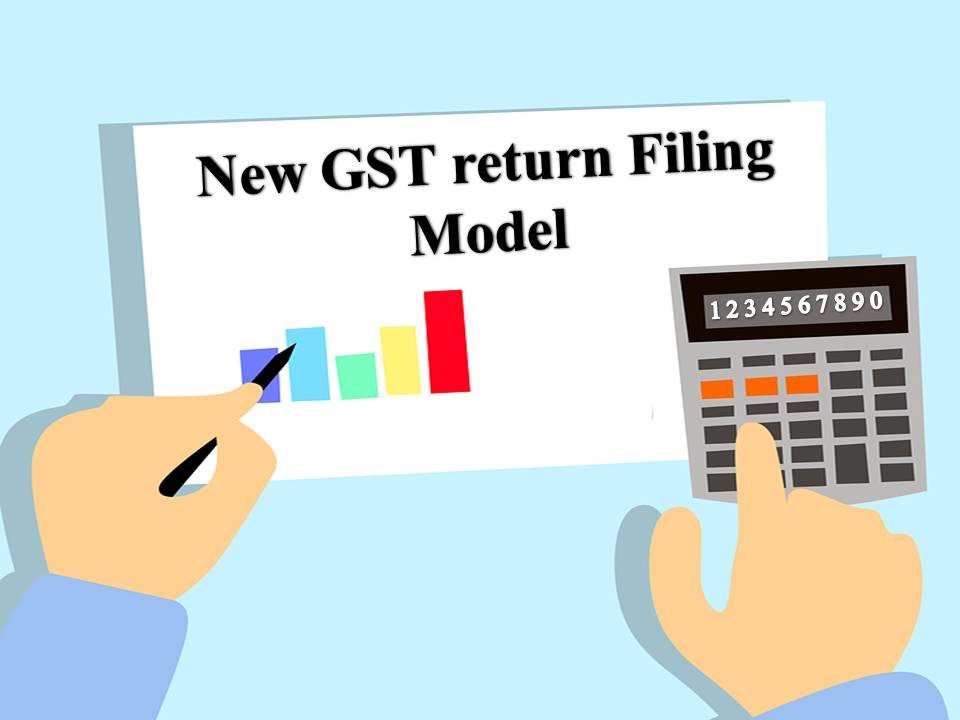One of the most frequent issues since the beginning of the Goods and Service Tax regime in India is regarding the New GST return filing model. Perhaps, this is one of those persistent questions that have been asked by every one of the taxpayers having GST registration, however is as yet unanswered so far.
However, the GST Council had notified in its 28th meeting that was held on 21st July 2018 that a revised GST return filing procedure would be rolled out very soon. This would include 3 essential sorts of GST returns:-
Table of Contents
Ordinary: GST Ret-1
- Sahaj: GST Ret-2 and;
- Sugam: GST Ret-3
The Central Government has now notified that the all new GST return filing group will be made effective from first April 2019 as a pilot project. This new GST return filing procedure will be made mandatory the nation over with effect from July 2019.
Under the amended GST return filing model, the businesses having GST registration can easily report their invoices consistently.
#1. What are the new types of GST returns in the new GST return filing model?
Given below are 3 new GST returns as prescribed under the new GST return filing model:
- GST Ret-1, herein referred to as Normal GST return
- GST Ret-2, herein referred to as Sahaj GST return
- GST Ret-3, likewise referred to as Sugam GST return
Very essentially, one must be misunderstood with the GSTR-1, GSTR-2 and GSTR-3, which are entirely of different purpose.
The all new GST return structures would now be able to be easily downloaded from the GST portal.
#2. Which taxpayers need to pursue the new GST return filing model?
All the Tax Assessees having GST registration and have yearly turnover in the preceding monetary year not exceeding ₹5 crores can choose from any of the aforementioned 3 new quarterly GST return frames.
#3. What is the Normal GST Return?
General GST Return or more normally called the “GST Ret-1” is a month to month or quarterly GST return structure.
This return is for the tax assessees having GST registration and has to declare a wide range of outward supplies (sales), inward supplies (purchases) and guarantee the info credit on the missing invoices.
#4. What is the Sahaj GST Return?
Sahaj GST Return more generally called GST Ret-2, is the return structure for the registered dealers having GST registration.
- Under this, they are supposed to declare their outward supplies under the B2C category.
- Besides, they have to indicate just those inward supplies (or purchases) that pull in GST on reverse charge premise as it were.
- However, they will not be allowed to take the information credit on the missing GST invoices.
- Hence, it is very essential to pursue proper GST invoicing.
- Moreover, they won’t be able to complete some other kind of inward or outward supplies, except B2C.
#5. What is the Sugam GST Return?
Sugam GST Return, more generally called the GST Ret-3 is a Quarterly GST Return.
- Under this, the Registered Suppliers having GST registration can declare their outward supplies (sales) under both B2B just as the B2C categories.
- They can declare their inward supplies or purchases that pull in GST on reverse charge as it were. However, they can’t guarantee input credit on the missing invoices.
- Here as well, they can’t make some other type of inward or outward supplies.
#6.When will the new GST return filing model become effective?
The new GST returns will be made effective from first of April 2019 on preliminary premise as it were. This new GST return filing model will last become mandatory with effect from July 2019.
#7.Why Should We File GST Returns Timely?
We should all File GST Returns on time as this-
- Avoid Penalty – Failing to do GST Returns filing timely can cause a high penalty of INR 200 per day. This can maximum extends up to INR 5000 for each GST return.
- Prevent Registration Cancellation – in the worst case scenario, if you don’t file timely GST Returns then your GST certificate can immediately get cancelled.
- Builds Better Relationship with your clients – Also, Filing GST Returns on time lets your customers claim the input tax credit effortlessly. Hence you must maintain a sound relationship and good prospects with your clients.
- Boosts GST Compliance Rating – Government of India has also planned to start the compliance rating system under GST. This involves a scorecard of every person having GST registration. In point of fact, well-timed GST return filing the only key factor responsible to raise GST Compliance rating.
- Gets Ease of availing loans – obviously, timely and correct GST Return filing gradually helps a taxpayer a lot when he goes to apply for a loan in a bank or financial institutions. The commercial Banks determine a taxpayer’s trustworthiness on account of his GST Return filing.
- Helps in E-Waybill generation – In order to induce the businesses for regular compliance and GST return filing, the finance ministry has also banned E-Way bill generation for shipping of goods, if in case the trader has not done GST return filing for 2 months in a row. Now, if a registered has failed to file GST returns for two months successively, he will not be allowed to issue an E-Way bill for transport of goods.

Alex is fascinated with “understanding” people. It’s actually what drives everything he does. He believes in a thoughtful exploration of how you shape your thoughts, experience of the world.




1 comment
Very informative post I was searching for few days. I am sure it will help me.
Thanks